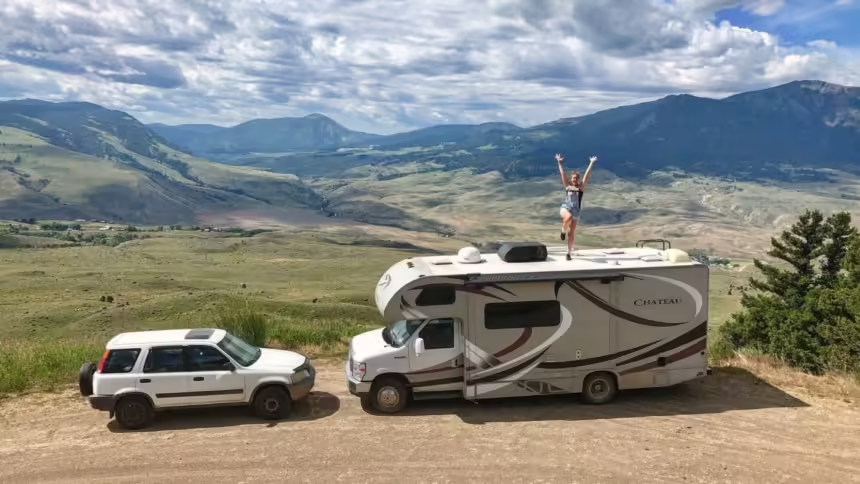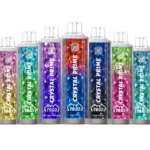Introduction
RV park living offers a unique lifestyle that combines the comforts of home with the adventure of the open road. For many, moving into an RV park means experiencing the freedom to travel, while still enjoying the sense of community and stability that comes with a more permanent living arrangement. However, transitioning to this lifestyle can be an adjustment, especially if you’re used to a more traditional home setup.
Whether you’re downsizing, retiring, or just looking for a change of pace, living in an RV park can provide a fulfilling and flexible lifestyle. In this article, we’ll cover practical tips for making a smooth transition to RV park living, so you can fully embrace the experience and enjoy the many benefits it has to offer.
1. Get Familiar with the RV Lifestyle
Before moving to an RV park, it’s essential to understand what life on the road entails. RV living comes with its own set of challenges and rewards, so it’s helpful to familiarize yourself with the basics of RV living before making the move.
- Research RV Types and Features: If you don’t already own an RV, take time to research the different types available, from motorhomes to travel trailers and fifth wheels. Each type of RV has its own unique features, layouts, and amenities. Choose an RV that best fits your needs, lifestyle, and budget.
- Understand RV Park Etiquette: Living in an RV park means sharing space with other residents, so it’s essential to be considerate of your neighbors. RV park etiquette includes keeping noise levels down, respecting other people’s space, and following park rules and regulations. Understanding these unwritten rules can help you integrate more smoothly into the community.
By getting acquainted with RV life before you transition, you’ll be better prepared to adapt to the changes and make the most of your time at the RV park.
2. Downsize and Organize Your Belongings
One of the biggest adjustments when moving into an RV is downsizing. RVs have limited space, so it’s essential to prioritize what you bring and ensure everything has its place. Downsizing can seem daunting, but it’s also an opportunity to simplify your life and focus on what truly matters.
- Prioritize Essentials: Begin by sorting through your belongings and identifying items that you absolutely need. Clothing, kitchenware, toiletries, and personal items are typically essentials, but be selective to avoid overcrowding. Consider the climate of the RV park you’ll be staying in and adjust your wardrobe accordingly.
- Use Space-Saving Solutions: There are many ways to maximize the limited storage space in an RV. Look for multi-purpose items, collapsible storage containers, and hooks to make the most of vertical space. Utilizing under-bed storage, wall-mounted shelves, and over-the-door organizers can help you keep your RV tidy and functional.
- Digitize Documents and Photos: If you have lots of paper documents, photos, or memorabilia, consider scanning and storing them digitally. This reduces clutter and ensures that you can still access important items without taking up valuable physical space.
Downsizing helps simplify your life and makes RV park living more manageable, allowing you to enjoy your new lifestyle without being overwhelmed by excess belongings.
3. Prepare for Weather Changes
Living in an RV park means being more exposed to the elements than in a traditional home. Depending on where you plan to stay, you’ll need to be prepared for changing weather conditions, from hot summers to cold winters. Proper preparation can help keep you comfortable in your RV throughout the year.
- Insulate for Cold Weather: If you plan to stay in an area with cold winters, it’s essential to insulate your RV to keep it warm. Invest in a good-quality RV skirt to block drafts under the vehicle, and consider insulating windows with thermal curtains or reflective insulation. Portable space heaters and heated blankets can also help keep you cozy in the colder months.
- Stay Cool in the Summer: RVs can heat up quickly in hot weather, so plan ahead to stay cool. Use reflective window covers to block the sun’s heat, and invest in a portable fan or air conditioning unit if your RV doesn’t have one. Staying hydrated and creating shade outside your RV with an awning or canopy can also help make the summer heat more bearable.
By preparing for weather changes, you’ll be better equipped to handle any conditions that come your way, making your transition to RV park living more comfortable and enjoyable.
4. Get to Know the Park Amenities
Each RV park is unique, with its own set of amenities that can enhance your living experience. Getting familiar with the amenities and services available at your chosen RV park will help you make the most of your stay.
- Explore the Community Spaces: Many RV parks offer community areas such as clubhouses, picnic areas, or fitness centers. These spaces provide great opportunities to meet fellow residents, participate in social activities, and enjoy shared facilities. Take advantage of these amenities to build connections and create a sense of home in your new surroundings.
- Learn About On-Site Services: Some RV parks offer additional services like laundry facilities, Wi-Fi access, and propane refills. Knowing what’s available on-site can save you time and effort, as you won’t have to travel off-property for these conveniences. For example, Bayside RV Park provides convenient access to essential services, making daily life easier for residents.
- Check for Local Activities and Attractions: Many RV parks are located near natural attractions, hiking trails, or cultural sites. Take some time to explore the local area and see what activities are available. Whether it’s fishing, kayaking, or exploring nearby towns, discovering local attractions can enrich your RV park experience.
By getting acquainted with the amenities and services offered at the RV park, you’ll be able to fully enjoy the community and make the most of your surroundings.
5. Maintain Your RV Regularly
RVs require regular maintenance to keep them in good working order, especially if you’re planning to live in one full-time. Staying on top of maintenance tasks can prevent breakdowns, prolong the life of your RV, and ensure a more comfortable living experience.
- Check for Leaks: Water leaks can cause serious damage to an RV if left unchecked. Regularly inspect the roof, windows, and doors for any signs of water intrusion, especially after heavy rain. Reseal or repair any leaks as soon as they’re detected to prevent long-term damage.
- Inspect Tires and Brakes: If you plan to move your RV from one park to another, regularly checking the tires and brakes is essential. Properly inflated tires and functional brakes are necessary for safe travel. Even if you plan to stay stationary, checking these components periodically ensures that your RV remains in optimal condition.
- Perform Routine System Checks: Your RV’s plumbing, electrical, and propane systems need regular attention. Test smoke detectors, inspect the propane system for leaks, and keep the plumbing system clean to avoid clogs or leaks. Routine system checks will help you avoid surprises and maintain a safe living environment.
For those new to RV park living, regular maintenance is a vital part of ensuring a comfortable and hassle-free lifestyle on the road.
6. Create a Comfortable Outdoor Space
One of the joys of living in an RV park is the opportunity to enjoy the outdoors. Creating a comfortable outdoor space expands your living area and makes your RV feel more like home. By setting up a cozy and functional outdoor area, you can make the most of your surroundings and enhance your RV park experience.
- Set Up Outdoor Seating: An outdoor seating area with chairs, a table, and perhaps an umbrella for shade can make your RV lot feel more inviting. Whether you enjoy morning coffee outside or relaxing in the evening, having a designated outdoor area encourages you to spend more time in nature.
- Use String Lights or Solar Lights: Adding outdoor lighting to your space can create a warm and welcoming atmosphere. String lights or solar-powered lights are both energy-efficient and decorative, making them ideal for evening gatherings or quiet nights spent outside.
- Personalize with Plants and Decor: Potted plants, outdoor rugs, and small decorations can add a personal touch to your outdoor space. By bringing a bit of greenery and color to your lot, you create a more homelike environment that reflects your personality and style.
Creating a comfortable outdoor space allows you to enjoy the best of both worlds—indoor comfort and outdoor living—while making your RV park home feel cozy and welcoming.
Conclusion
Transitioning to RV park living can be an exciting and rewarding experience that offers a blend of freedom, community, and simplicity. By following these tips—familiarizing yourself with RV life, downsizing, preparing for weather, exploring park amenities, maintaining your RV, and creating a welcoming outdoor space—you’ll be well-equipped to make the most of your new lifestyle. Embracing the unique opportunities of RV living can lead to unforgettable adventures and a fulfilling sense of home on the road.
For those interested in experiencing the freedom and flexibility of RV park living, Bayside RV Park offers an inviting community with a range of amenities designed to make life on the road both comfortable and enjoyable.


